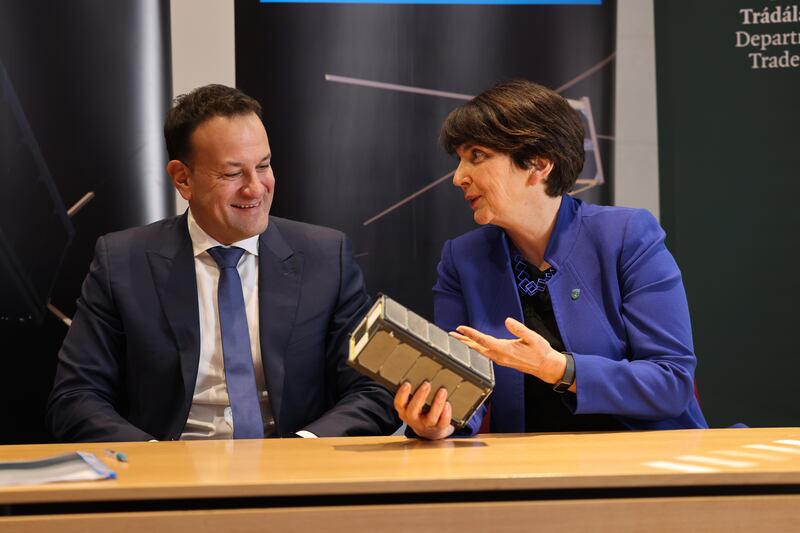It takes a campus to launch a satellite, UCD president Orla Feely said in advance of the launch of EIRSAT-1 on Friday.
All going to plan EIRSAT-1 will be carried into space on board a Falcon 9 Space X satellite owned by Elon Musk this Friday evening. There’s no escaping Mr Musk if you are Irish at present on Earth or anywhere else.
Ireland will finally join the space age when the brick-sized satellite is disgorged from the mother ship into the infinite void two hours after launch from Vandenberg Space Force Base in California at 6.45pm Irish time on Friday evening.
It’s a satellite designed and made in UCD with the support of many State institutions. Fifty UCD students, including nine PhDs and nine MA students, producing 23 research publications to date out of its construction. It has taken 20,000 hours of testing and problem solving to get it to this stage.
Actor Armie Hammer resurfaces as host of celebrity podcast
Heart-stopping Halloween terror: 13 of cinema’s greatest jump scares
Doctor Odyssey’s core message: just imagine Pacey from Dawson’s Creek holding you tight and saying, ‘Shhh, it’s okay’
Conor Niland’s The Racket nominated for William Hill Sports Book of the Year
“For so many of the young students, they will be proud to see a little piece of Ireland, a little piece of UCD in the night sky will be amazing,” said Prof Feely. “The technical challenge of packing everything into that little space is amazing. Space is the gateway for so many students in science and engineering.”
It is, she said paraphrasing the immortal words of Neil Armstrong, one small step for the Irish space industry, but the start of something huge.
One of the students involved was Laura Cotter (23) who graduated last year with a BSc in physics with astronomy and space science last year. She is a PhD candidate in gamma-ray bursts and supernovas.
“I remember seeing it on the news when I was 17. I never thought I would be working on it,” she said of EIRSAT-1.
Inside the satellite’s tiny body will be a miniature detector which will measure gamma-ray bursts which occur, astronomers think, when stars explode at the end of their lives.
Another experiment involves the alternative checkerboard panels on the top of the satellite which will measure temperature modification in space. There will be a third experiment on wave based control which is an innovative means of ensuring that satellites in space are pointed in the right direction.

Just as Voyager 1 included a phonograph record capturing sounds and images from Earth, EIRSAT-1 will include a poem which is a collaboration involved teenage students around the country.
It will be engraved on the antenna module in a formation like a spiral galaxy and is called All Ways Home.
The students involved will be divided between the Beech Hill physics campus on UCD and California where they will anxiously watch the launch live on the European Space Agency (ESA) live feed.
The gathering in UCD’s student union centre was joined online by the ESA director general Josef Aschbacher, who said the students involved should be “proud” of their work.
They will be making history by designing the first Irish satellite to go into space, the first of many, he predicted.





